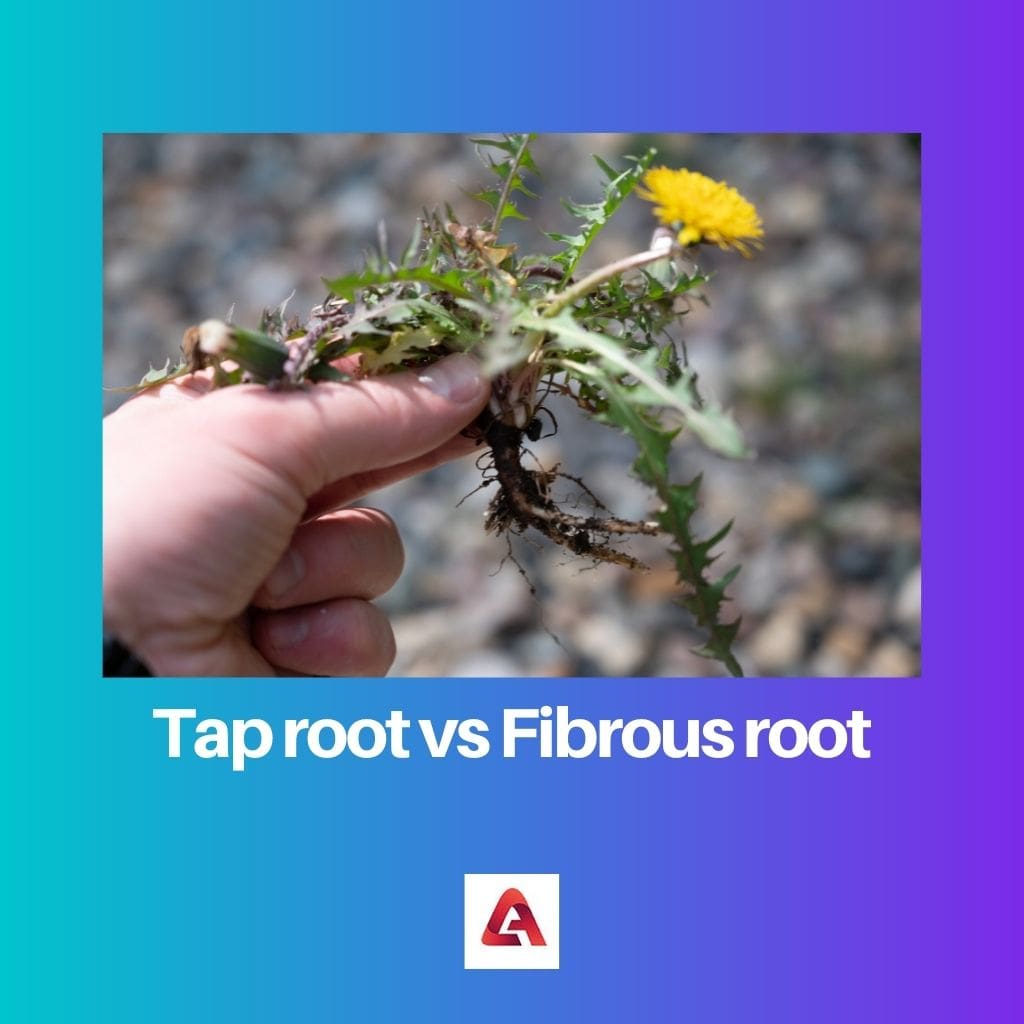One of the essential parts of the plant is the root. The root plays a vital role in caring for the plant’s growth.
Some of the functions of the root include- creating a solid connection with the soil, absorbing the minerals and water from the soil, transporting the absorbed materials to the stem, and, eventually, other parts of the plant.
The most important function is to store the products obtained from photosynthesis. The roots are modified to perform certain specific functions.
The modified roots may be aerial, taproots, or fibrous roots.
Key Takeaways
- Tap roots are primary roots that grow vertically downward, with smaller lateral roots branching off the main root, common in dicot plants like carrots and dandelions.
- Fibrous roots form a dense network of thin, branching roots spread horizontally close to the soil surface, found in monocot plants like grasses and wheat.
- The key distinction between tap roots and fibrous roots is their growth pattern and structure, with tap roots having a dominant central root and fibrous roots forming a more extensive, shallow root system.
Tap Root vs Fibrous Root
A taproot is a type of root that grows straight down into the ground and develops a few small lateral roots. It is common in dicotyledonous plants. Fibrous root is made up of many small, thin roots spread out in all directions from the base of the plant. It is common in monocotyledonous plants.

Comparison Table
| Parameters of Comparison | Taproot | Fibrous Root |
|---|---|---|
| Lifetime | The taproot will develop at the time of plant development and last until the plant dies. | The fibrous root will not last until the plant dies. |
| Found in | The taproots will develop in dicots. | The fibrous root will develop in monocots. |
| Origin | The taproots will develop only in radical. | The fibrous root will develop in any part apart from the radicle. |
| Depth of growth | The taproot will grow deeper into the soil than the fibrous root. | The fibrous root will not grow much deeper into the soil. |
| Example | Taproots can be seen in China Rose, grams, etc. | The fibrous root can be seen in maize, wheat, grass, etc. |
What is Tap Root?
The taproots are the primary roots of the angiosperms. They are thicker slender structures that will develop from only one part of the plant, the radicle.
They tend to get deeper into the soil, thus helping the plant anchor to the soil. There will be a leading root called the primary root.
The other roots will develop from the primary root. Thus, the primary root, also called the main root, branches into secondary, tertiary, etc.
The primary roots are trunk-shaped. These roots tend to grow in a horizontal direction and then will proceed to grow further down.
The taproots will help to absorb the water and nutrients from the soil.
Beyond observing the water and nutrients, the taproots have an essential function. They are accommodating for food storage because the taproots have modifications that help them to store food for a long time.
This food will be stored as starch and sugar in the primary root of the taproot. The plants that have a taproot system are beetroot, carrot, parsnip, parsley, conifers, poison ivy, radishes, dandelions, etc.
These vegetables will grow underground; hence they can store their food in the roots. This prevents the plants from being affected by predators as they remain inside the soil throughout.
Hence the root modifications of the taproots are highly beneficial to the plants.

What is Fibrous Root?
The fibrous root is also called the adventitious root. Fibrous roots are thin hair-like structures that tend to grow in a horizontal direction rather than growing downwards.
Every root in the fibrous heart is equal in length and size. The advantage of fibrous roots is that they can grow even from stems and leaves.
Hence the fibrous root can be underground roots or aerial footage. But a more significant disadvantage is that the origins are short-lived.
They do not hold up for a longer time. The fibrous roots can not be as deep-rooted as taproots; hence, most of the plants with fibrous roots can be easily removed from the soil.
Since the fibrous roots tend to form a cluster of roots, they help prevent soil erosion. Every plant will initially start developing taproots; then, the other roots will appear later.
Hence in the later stage, the roots can not be differentiated into the primary root. The plants that have fibrous roots are wheat, bananas, onion, and many other plants.
Grasses also have fibrous roots. The fibrous roots will be able to spread like a mat in the soil.
This could be seen in Palm trees.

Main Differences Between Tap Root and Fibrous Root
- When observed on the venation of the leaves, the plants with the taproot system showed reticulate venation of leaves. But the plants that have fibrous root systems had parallel venation of leaves.
- The plants with the yap root system will have primary roots that give rise to secondary roots. But plants with adventitious roots will have only one type of root, which is fragile.
- Plants with taproot systems are tough to be pulled from the ground as their roots route deeper. But removing the plant from the soil, which has a fibrous core, is more accessible.
- Plants that have taproots can survive even under drought conditions. Plants with adventitious roots can not survive in droughts.
- The taproots absorb nutrients and water from the soil, whereas fibrous root absorbs fertilizers, and they help in the prevention of soil erosion.


Very well articulated and informative. I learned a lot about tap roots and fibrous roots that I wasn’t aware of before reading this article.
I never knew roots were so fascinating and played such a crucial role in the survival of plants. Excellent breakdown of the functions and types of roots.
Right? It’s truly amazing how nature has equipped plants with such diverse root systems to thrive in different environments.
Truly a comprehensive explanation. I’ve learned so much about tap roots and fibrous roots from this article.
This article provides a clear and concise overview of the functions and characteristics of tap roots and fibrous roots. A valuable read for biology enthusiasts.
Indeed, it’s impressive to learn how tap roots and fibrous roots differ in their origin, growth pattern, and lifetime.
This article offers an impressive comparison table and detailed explanation of tap roots and fibrous roots. It’s both educational and engaging.
Completely agree. The article effectively captures the essence of how tap roots and fibrous roots differ in their growth, lifetime, and functions.
This article provided a captivating exploration of tap roots and fibrous roots. The depth of information and comparisons is truly impressive!
Absolutely, Lucy! The article beautifully captures the intricate details and significance of tap roots and fibrous roots.
A well-researched and informative article on tap roots and fibrous roots, highlighting their significance and unique characteristics.
Very true. The detailed descriptions and examples of tap roots and fibrous roots are incredibly enlightening.
Absolutely. The article effectively conveys the importance of root systems in plant survival, especially the food storage functions of tap roots.
The in-depth comparison between tap roots and fibrous roots really highlights the unique features and benefits of each type. Very enlightening!
Absolutely. It’s fascinating to understand how plants’ root systems are adapted to fulfill specific functions based on their species.
I’ve always overlooked the significance of root systems, but this article has shed light on the importance of tap roots and fibrous roots. Such a valuable piece!
Couldn’t agree more. It’s intriguing to recognize the distinct roles of tap roots and fibrous roots in plant survival.
An excellent explanation and comparison of tap roots and fibrous roots. The article does a great job of clarifying the unique functions and structures of these roots.
Absolutely. The insight provided about the food storage and environmental advantages of tap roots and fibrous roots is truly fascinating.
Fantastic explanation of the complexity of roots and how they differ between plant species. I appreciate the enlightening comparison table!
Absolutely! The detailed insights given about tap roots and fibrous roots are really helpful.